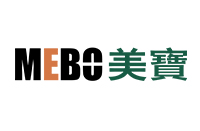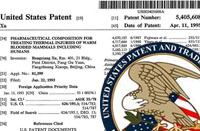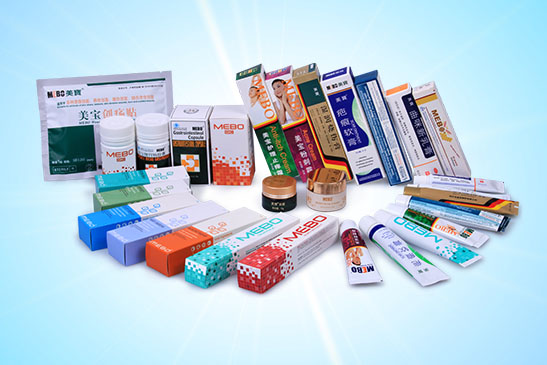Balm for burns
Until the late 80s of the last century, burnt skins were either replaced by skin grafts or assisted to heal on their own. But an innovative therapy from China that combines Western medicine and Traditional Chinese Medicine has since offered the option of regenerating damaged skin from within.
WHEN we reflect on the amount of suffering a burn injury can bring, we can appreciate the reasons it is considered one of the most painful of human experiences.
 Prof Dr Chen YongChong ... Even though we have had good results with this therapy, other techniques still have an important role to play in burn treatments.
Prof Dr Chen YongChong ... Even though we have had good results with this therapy, other techniques still have an important role to play in burn treatments. It is not just the pain that irritates when mild, and excruciating when severe; disfiguring scars, debilitating disabilities, and psychological trauma also make surviving the burn as much of an ordeal as perishing from it.
But as orthomolecular physician Dr Bradford S. Weeks, the co-editor of the Burns Regenerative Medicine and Therapy monograph observed in his introduction to the history of burns medical science, ever since doctors have come to a consensus after the First World War that burns are best treated with surgical skin transplantation with subsequent scar reduction and pain control medications, they have improved their patients’ chances of surviving burn injuries by leaps and bounds.
In half a century, burn treatment protocols that include the timely removal and replacement of burnt tissue with skin grafts, pain relief, infection control, and scar reduction have been improved and refined to minimise complications and increase patients’ chances of survival.
If a patient sustains burns too extensive there is no viable donor site left on him to graft, there are a few types of artificial skin now available as alternatives.
So, if surviving extensive burns to 30% of a person’s body was a matter of luck in the past, it had become an expected survival after the 1950s. Now, even patients who sustain deep burn injuries to 90% of their bodies can look forward to staying alive when offered timely treatment.
However, in 21st century medicine, keeping patients alive is only half the battle won, as Prof Chen YongChong, plastic surgeon and clinical director of China National Science & Technology Centre for Burns Wounds and Ulcers will tell you. The other half – helping the patient live on with minimal scarring and reduced disability – is now the challenge.
“Surgical excision and skin grafting therapies are good techniques as they could save lives, but many patients remain badly scarred and disabled,” he says.
“That is why it is necessary to consider how we can make patients recover better, more efficiently.”
Burning up
It was this desire to help burn patients recover with minimal pain, scarring, and disability that drove Chinese medical doctor and scientist Prof Xu RongXiang to invent and develop what proponents now say may be the next standard of care for burns treatment: burns regenerative therapy (BRT).
Prof Chen, who was in Malaysia recently to speak to local doctors about BRT, relates the story of Prof Xu’s discovery.
It began in the 1970s when Prof Xu, then a young medical student going through his residency in a burns unit, witnessed his teacher changing a baby’s wound dressing. As the baby wailed in pain and bled when the dressing was removed, Xu resolved to find another way to treat burn patients – a method that is more effective and easier on patients’ nerve endings.
Dr Xu studied and experimented on ways to improve the wound healing process using the skin of plants, animals, and finally, humans. And as he believes that a moist environment is vital for cells to live and regenerate naturally, instead of following conventional treatment procedures that keep burn wounds dry, he developed the moist exposed burn therapy (MEBT) – a method in BRT that does the opposite: it keeps burn wounds moist.
“MEBT is a treatment method where the general principle is to always keep the wound moist, and to cause no injury, no pain, and no bleeding to the patient when we treat the wound,” says Prof Chen.
“We also need to keep the use of antibiotics and disinfectants minimal because it impairs cell regeneration, and in the process of killing bacteria, we might kill healthy cells in the wound too,” he adds.

Treatment option: regeneration
As the principles in MEBT/MEBO treatment differ significantly from the conventional treatment for burns (see A paradigm shift), adopting it – to many doctors – often takes a process of “unlearning” their training in conventional burn treatment before they can “relearn” the principles of BRT, says Prof Chen.
That is why the best way to learn is for doctors to try using the treatment in their own practice, he adds.
“Most doctors are worried about infections taking place in their patients’ wounds because MEBO does not contain antibiotic properties, and MEBT discourages the use of topical antibiotics on the wound site,” says Prof Chen. “But we have found out through experience that by cleaning the wound once or twice a day, we have been able to keep the infection under control even without antibiotics.”
“However, if the patient have already developed an infection, antibiotics should be given intravenously or intramuscularly,” he explains.
Now, even after treating patients with burns, wounds, and ulcers with BRT for 13 years, Prof Chen can still remember his initial trepidation when he was approached by the MEBO group in China in 1996.
Although the Chinese government have endorsed the use of BRT in hospitals in the country since 1988, Prof Chen was, at best, sceptical. “It is very difficult to believe,” he recalls. “I thought, when a patient’s skin sustained deep burns, they sometimes have no skin cells left. Where do these new skin cells come from, and how can we regenerate them?”
But after reading more about the therapy, Prof Chen decided to visit a few hospitals in China to observe burn patients being treated with the technique. “After seeing for myself that even for patients with deep burns, skin could be regenerated, I was more convinced,” he says. “But it was only until I had seen good results in my own patients did I finally believe in the technique. Soon after, my department adopted it as the main treatment option to treat burns patients.”
The therapeutic focus of BRT with the MEBT/MEBO technique extends beyond a patient’s survival. It aims to:
·Alleviate wound pain
·Prevent or halt further physical, thermal damage to the wound
·Liquefy and discharge necrotic (dead) tissue from the wound and allow residual, viable tissues to continue a process of (endogenous) regeneration in the body.
·Create a physiologically moist environment to ensure well-regulated physiological repair of residual skin tissues with minimal scar formation.
·Prevent infection through active control of microbial concentration at the wound site through drainage and other mechanisms.
Although researchers know roughly how it works, research on the exact mechanisms of the MEBT/MEBO technique is still ongoing, says Prof Chen.
As he showed examples of his clinical experience, which includes patients who sustained deep third degree burns and chronic wounds recover without surgery, he explains that the technique is actually easy to learn and apply. However, he emphasised that a doctor’s experience with the technique and his adherence to BRT protocols greatly influences the results.
“As every patient is different, we need to treat them individually. What I have shown are only the experiences my colleagues and I. You may be dealing with a different situation altogether,” he says.
Since BRT’s inception and use in China, statistics by the Chinese Burn Association of the Integration of Traditional Chinese and Western Medicine shows that to date, the total cure rate of patients who sustained severe burn injuries to 90% of their body (a total burns surface area of 90%) have increased from 5.7% to 92%, while the disability rate for the same population have decreased from 100% to 2.5%.
According to Prof Chen, MEBT/MEBO can also be used for chronic wounds and the treatment can be administered in an inpatient or outpatient setting.
Also, in some cases, BRT needs to be combined with surgical methods such as skin grafting or flap and micro-skin planting (a surgical method where skin from a small donor site is implanted at the wound site and induced to regenerate new skin) to achieve better results.
“The only exception, where BRT could not be used, is when a patient is sensitive or allergic to sesame (as MEBO contains sesame oil),” he says.
When asked if BRT will slowly replace other surgical techniques for burn treatment, Prof Chen says, “Even though we have had good results with this therapy, other techniques still have an important role to play in burn treatments. As there are also improvements and advancements in those fields, we should have the best of both worlds,” he adds.









